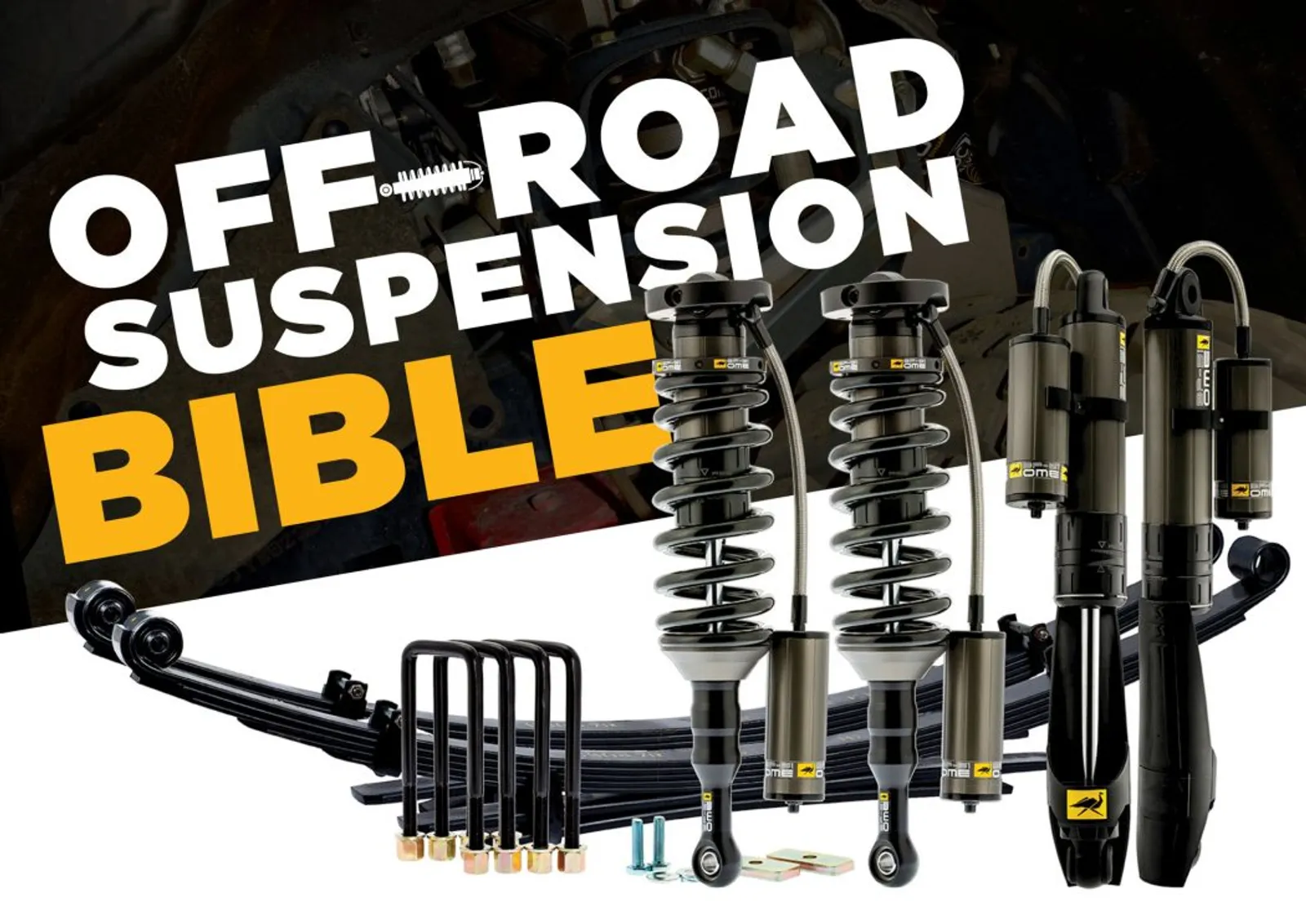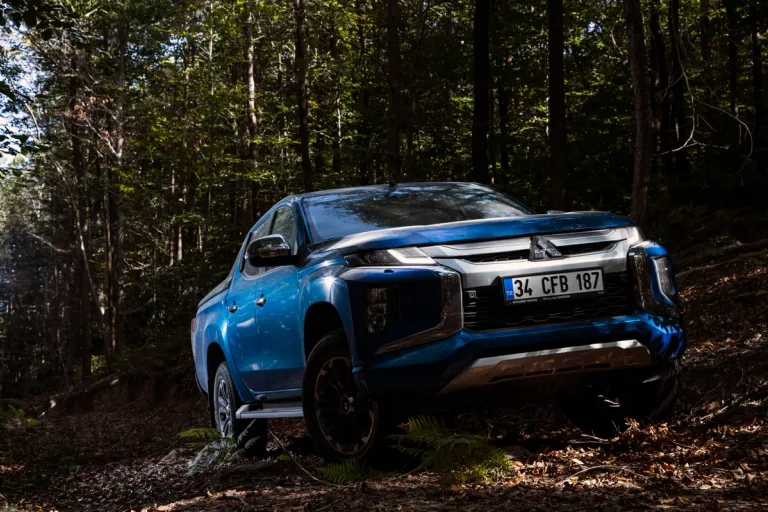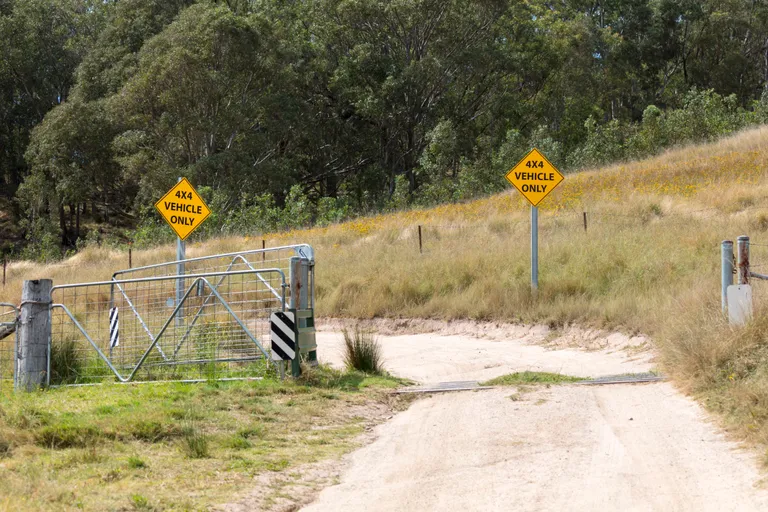Everything you have wanted to know about suspension, but were too afraid to ask…
It is impossible to not hammer on about the fact that factory-fitted suspension is a compromise. Now I’m not going to say something vague like suspension is one of the most important components on a vehicle, as a $0.20 seal in your clutch hydraulics system can result in a call to your local tow truck. Having said that, the reality is suspension would have to be right up there next to having a chassis, engine and steering wheel in terms of importance. It holds your vehicle up, it determines the ride quality and handling characteristics, and it works harder than a one-armed swimmer to stop you and your occupants from rattling to pieces. Then there is the other side of the coin – for those believing there is a better solution out there than the one that rolled off the new vehicle production line. What should you be looking for in aftermarket suspension, and what do you need to know to keep your 4X4 in a legal and roadworthy state? Well, I’m glad you asked!
STATE-BY-STATE LEGALITIES
Qld: Maximum suspension lift 50mm, the maximum total combined lift of the vehicle cannot exceed 125mm (including tyres and body lift).
NSW: If altering the vehicle’s ride height by less than one-third of the manufacturer’s suspension travel in the direction of ride height change, no certification is required.
Vic: The vehicle’s suspension may be raised by up to 50mm, provided that at least two-thirds of the original suspension travel in either direction is retained. Only commercially available suspension kits may be used.
Tas: Suspension travel in the bump or rebound mode must not be altered by more than one-third of that measurement as specified by the original manufacturer. A vehicle modification application to be made to the Vehicle Standards section for any vehicle lift that exceeds 50mm in total; and this requires certification.
SA: A total lift of more than 50mm requires prior approval in the form of a Statement of Requirements and a report from a Chartered Professional Engineer.
WA: Lowering and raising suspension by not more than one-third of the original suspension travel (provided the original vehicle height is not increased or decreased by more than 50mm) is permitted without certification. Lifts over 50mm but no more than 150mm will require certification.
NT: Lowering and raising suspensions by not more than one-third of the original suspension travel (provided the original vehicle height is not increased or decreased by more than 50mm) is permitted without certification. Lifts over 50mm but no more than 150mm will require certification.
FIVE QUESTIONS TO ASK YOUR SUSPENSION GURU
- How long is the warranty period?
- How much lift is safe and legal for my vehicle?
- What else should I do while the vehicle is getting work done?
- What spring rate would you recommend for my vehicle’s modifications?
- Do you have parts back-up Australia-wide?
FIVE COMMON MISTAKES EVERYBODY MAKES
- Making purchases based on price rather than needs
- Not accurately estimating how much weight you will carry
- Wanting to lift the vehicle too high
- There is more to it than just springs and shocks
- Not getting a wheel alignment post suspension install
GROSS VEHICLE MASS… EWWW
Many four-wheel drivers have overloaded their vehicles without even knowing it. Vehicle manufacturers list strict figures for the amount of weight that can be carried, as well as how much can be towed. Once you add barwork, long-range fuel tanks and camping gear, you would be amazed at how quickly you can reach and exceed your GVM. We spoke with Mark Deprinse, the Product Manager for Old Man Emu, to get a better idea of what goes into the GVM upgrade process.
SIX QUESTIONS WITH MARK DEPRINSE FROM OME SUSPENSION
Q: Are GVM upgrades possible on new and old vehicles?
MD: “New, pre-registered vehicles are able to have a GVM upgrade performed and certified in-house, and this is the case in all States of Australia. Used vehicles can have a GVM upgrade performed; however it is a little trickier as laws do vary from State to State. You will need to consult an authorised engineer in your area first. We recommend visiting your local ARB branch to get the correct information for where you live, to best understand what will be involved.”
Q: Can any vehicle have a GVM performed?
“Yes and no. Every vehicle has a GVM issued from the factory; to have the GVM increased there are a series of tests that need to be independently certified, as well as ADRs (Australian Design Rules) which need to be retested. For example, brake testing. This testing is incredibly expensive, which is why most people wouldn’t go through with it. We fund this testing when developing our GVM upgrades, meaning the consumer won’t have to.”
Q: What are the associated costs?
“The Compliance Plate Kit, to signify the GVM upgrade has been approved, costs between $280 and $300. From there, you will also need to pay for fitting of the suspension, as well as the actual components. So to give a figure is impossible as every vehicle is different. For example, the 70 Series LandCruiser is more expensive to GVM upgrade than a 200 Series, as leaf springs and the associated required components cost more than coil springs.”
Q: Are there different GVM regulations State by State?
“Yes, absolutely. Some States are easier to gain approval than others, and some are notoriously challenging. This only applies to second-hand or pre-registered vehicles though (as mentioned). A new unregistered vehicle can have the GVM upgrade performed by us before you take delivery of it, and this will be considered roadworthy in any State of Australia. Again, consult your engineer and visit your chosen suspension expert to discuss the plan of attack before upgrading the GVM.”
Q: Are your GVM upgrades covered by a warranty?
“Yes, our GVM kits are covered by the very same warranty as the rest of our Old Man Emu suspension kits.”
Q: Will a GVM upgrade affect your new vehicle warranty?
“No, our GVM upgrades will not affect your new vehicle warranty. If there are issues with the suspension, we cover the repairs under our warranty where applicable, not the vehicle manufacturer’s warranty.”
LIFTING A MODERN 4X4 LEGALLY
This has been a massive issue of contention in the past: Lifting a modern vehicle (made post 2011) that is fitted with Electronic Stability Control. Aside from lifting the suspension, fitting even slightly larger tyres was a no-go also. Well, this all seemed a little ridiculous to the Australian Automotive Aftermarket Association (AAAA for those into acronyms) who spent roughly $250,000 on testing both here and in the USA. The outcome of this testing was that it has been proven that a small increase in ride height, up to 50mm, will not impact the operation of ESC. In fact, according to the supporting document VSB14, it has now been declared that a lift of up to 50mm can be carried out under basic modification without certification.
THE FUTURE IS HERE – REMOTE RESERVOIR SHOCKS
Mark my words, by the end of next year nearly every four-wheel drive suspension manufacturer will offer a remote reservoir shock absorber or will be trying to develop one quick smart. It is pretty easy to see why; and no, it is not just because they look cool. More oil inside a shock absorber means less heat, and heat is the main killer of shock absorbers. If you are popping shock absorbers like Mentos while driving over brutal corrugations, it could be time to level up and investigate remote res. Another practical advantage of good quality remote-res shock absorbers is the fact they can be rebuilt or serviced. In fact while having a set of Dobinson MRR remote-res shocks fitted to my own Nissan Patrol, the engineering team suggested it is a good practice to have the shock oil replaced every two years. Advice I will follow.
7 REASONS TO STAY LOW
- Droop or down-travel is important, lift reduces the available amount (especially with independent suspension)
- Not tipping onto your roof is a good thing (call me old-fashioned)
- Being able to access shopping centres or parking stations is nice also
- Increased wear on driveline components is the definition of a bad time
- Big lifts = poor handling without lots of expensive work and components
- Add $1,000 to your budget for every inch of lift past the first inch
- Low and wide is the new tall and scary
SUSPENSION PACKAGES… YAY OR NAY?
A suspension kit or package makes a heck of a lot of sense for a touring four-wheel drive. While for some more extreme applications (think really heavy loads or those wishing to drive tougher tracks) they can be a compromise, it is wise to match components from one manufacturer that are designed to work with each other rather than against. It is the little things – like U-bolts that fit the leaf pack properly, and being supplied the correct amount of suspension bushes that (shock horror) will actually slide into the springs as they should. There is also the bigger issue of matching shock absorber valving with the specified spring rate…
something that purchasing a kit or suspension package from a reputable supplier should ensure. If something does go wrong with your vehicle’s suspension, it is also nice to know you only need to make one phone call to one manufacturer to chase the part/s. Simplicity is key when it comes to building a successful touring machine, after all.
This article was originally posted by Unsealed 4×4.





